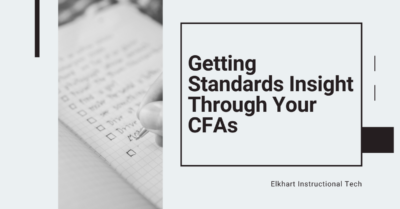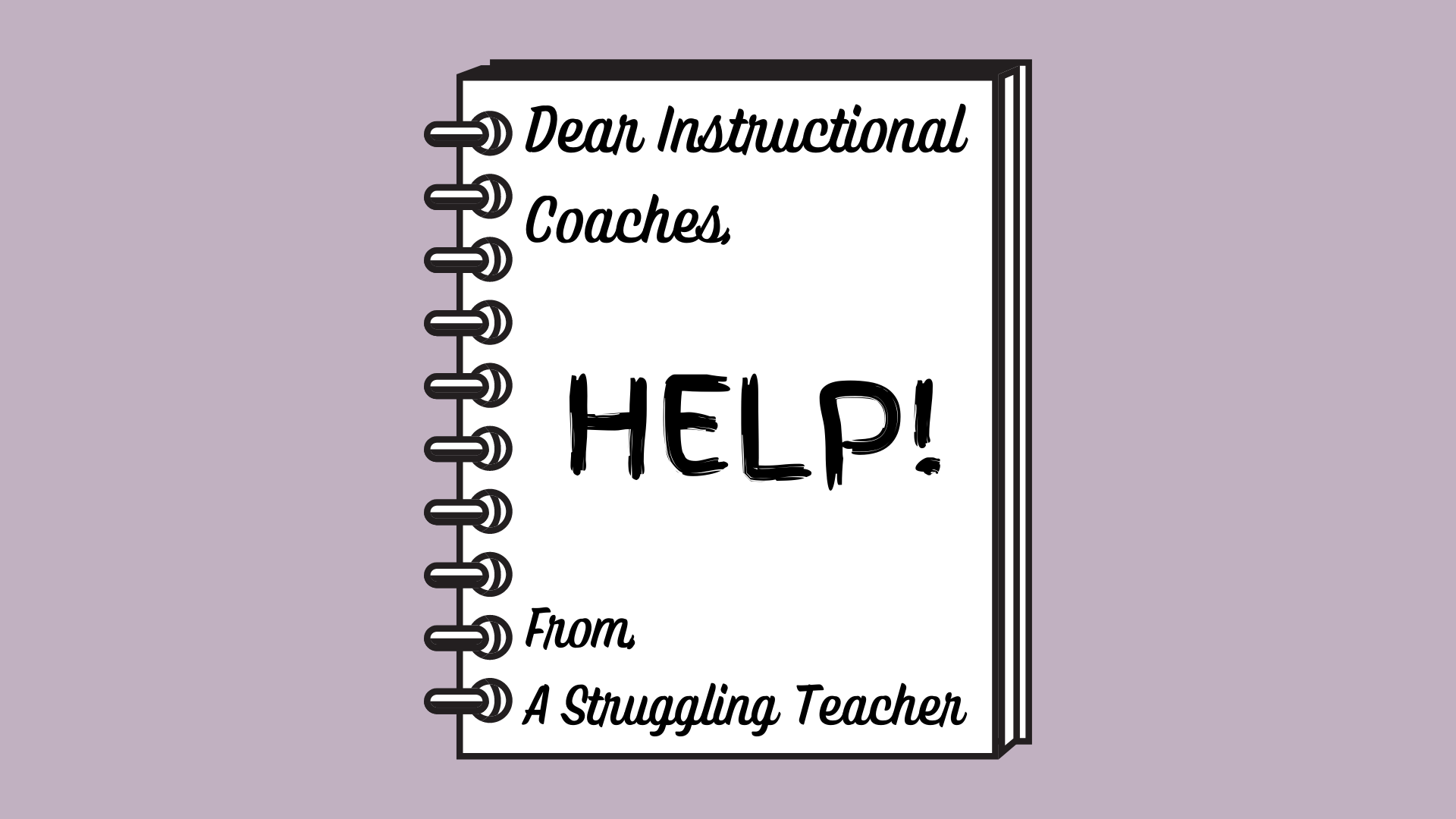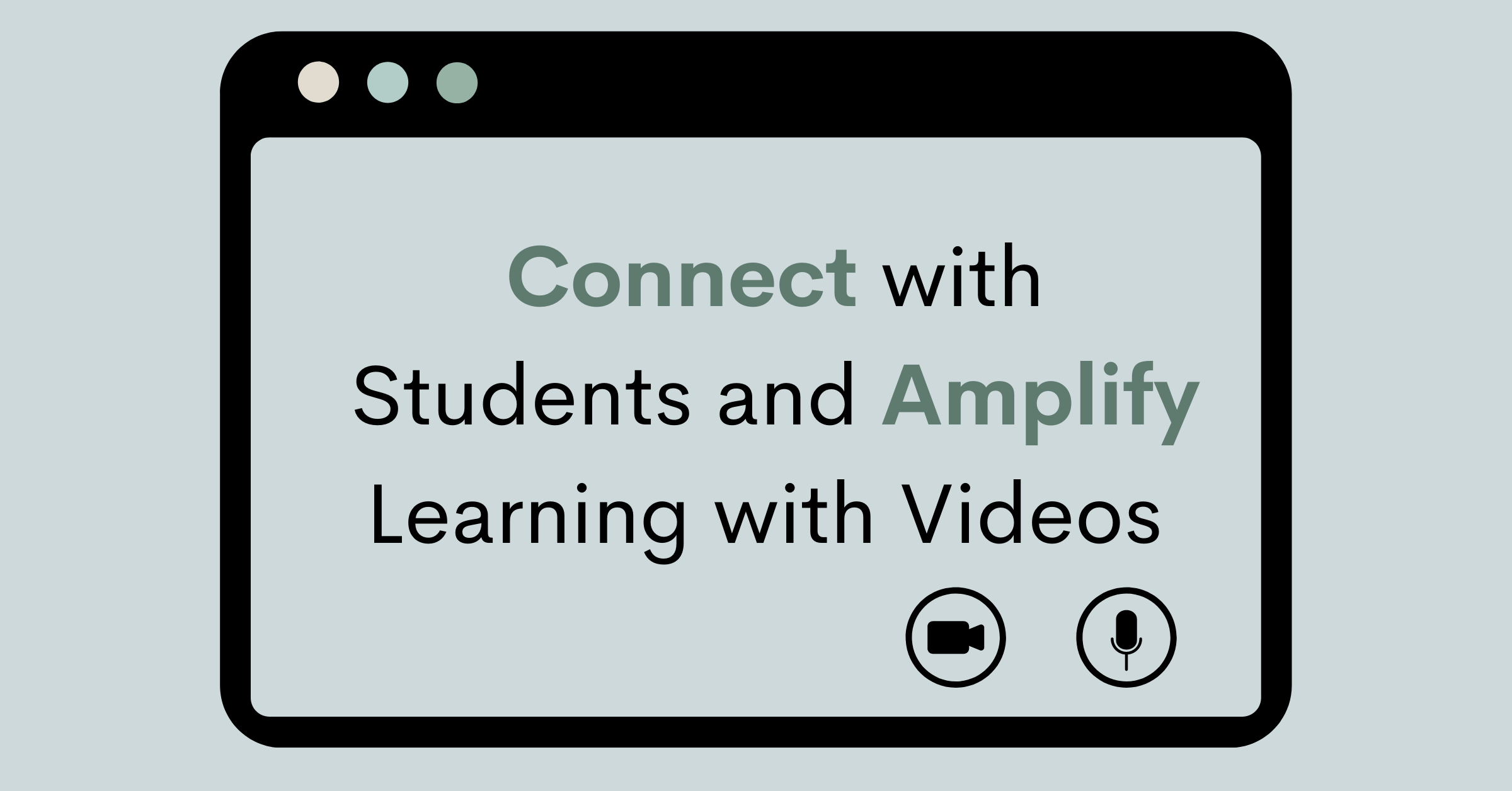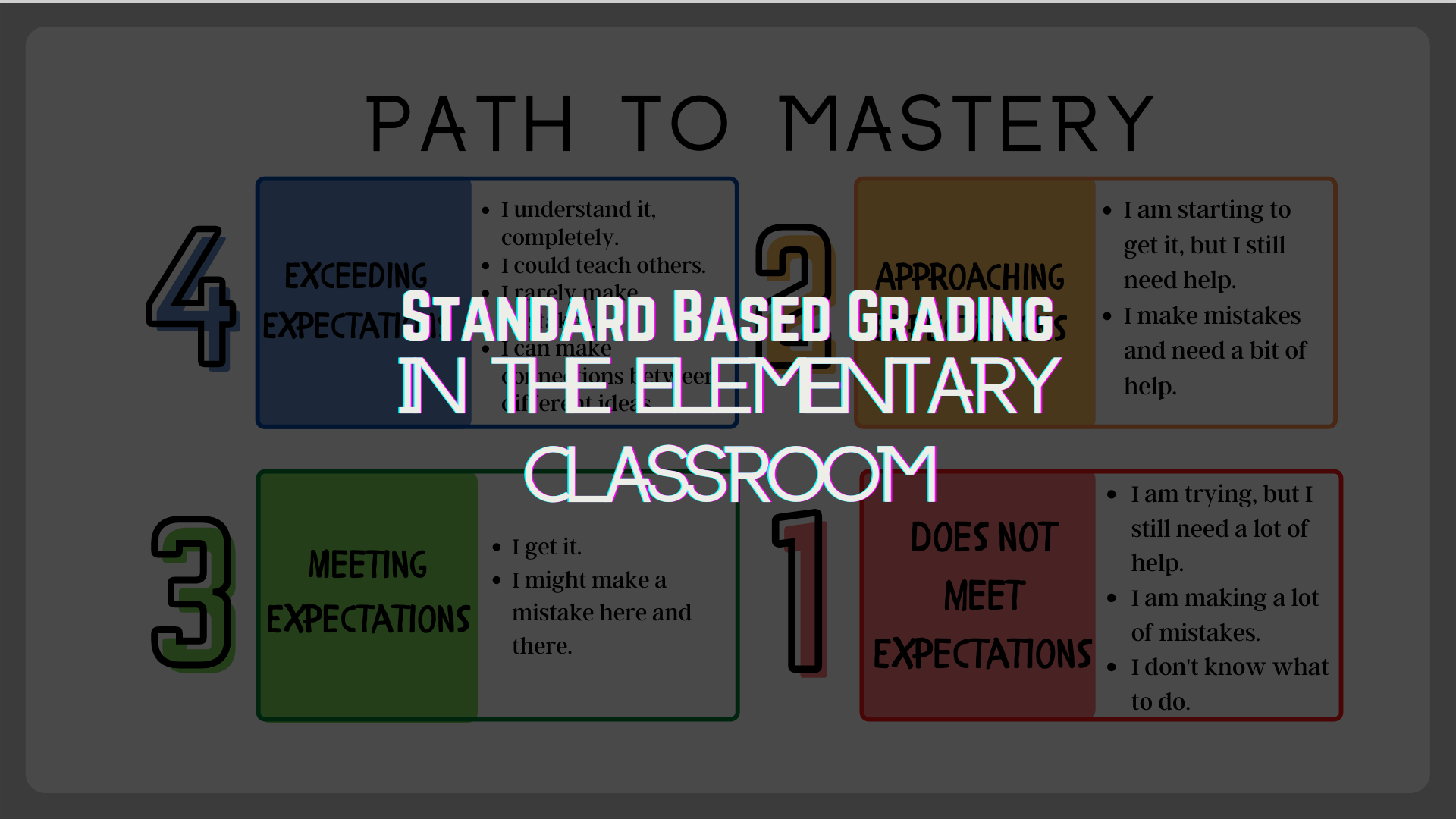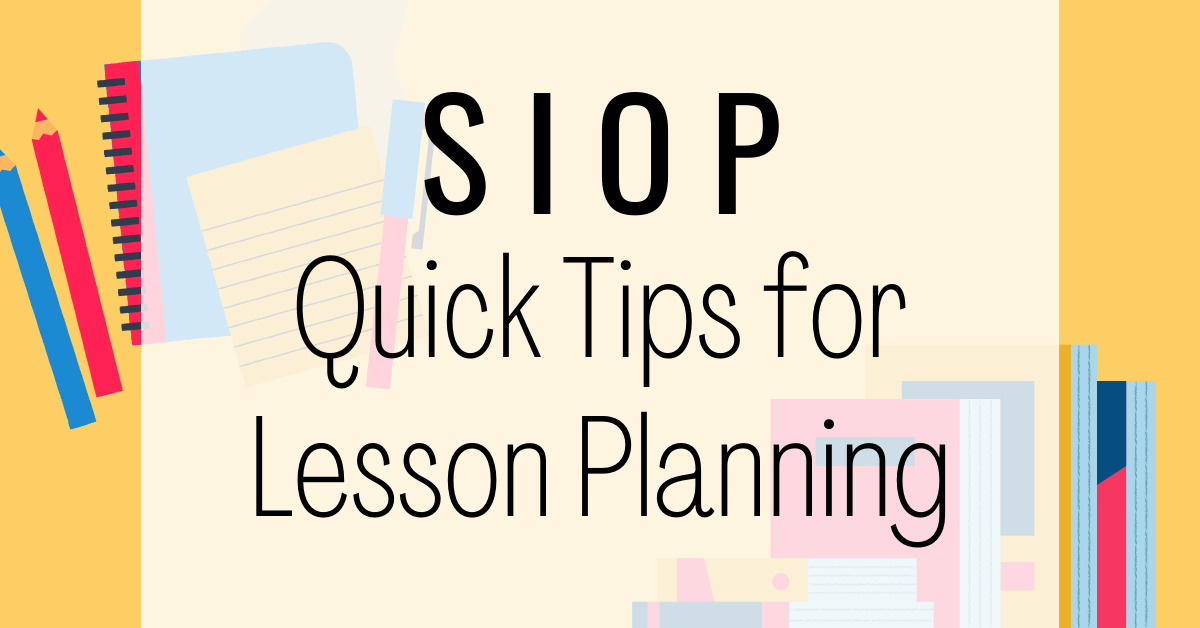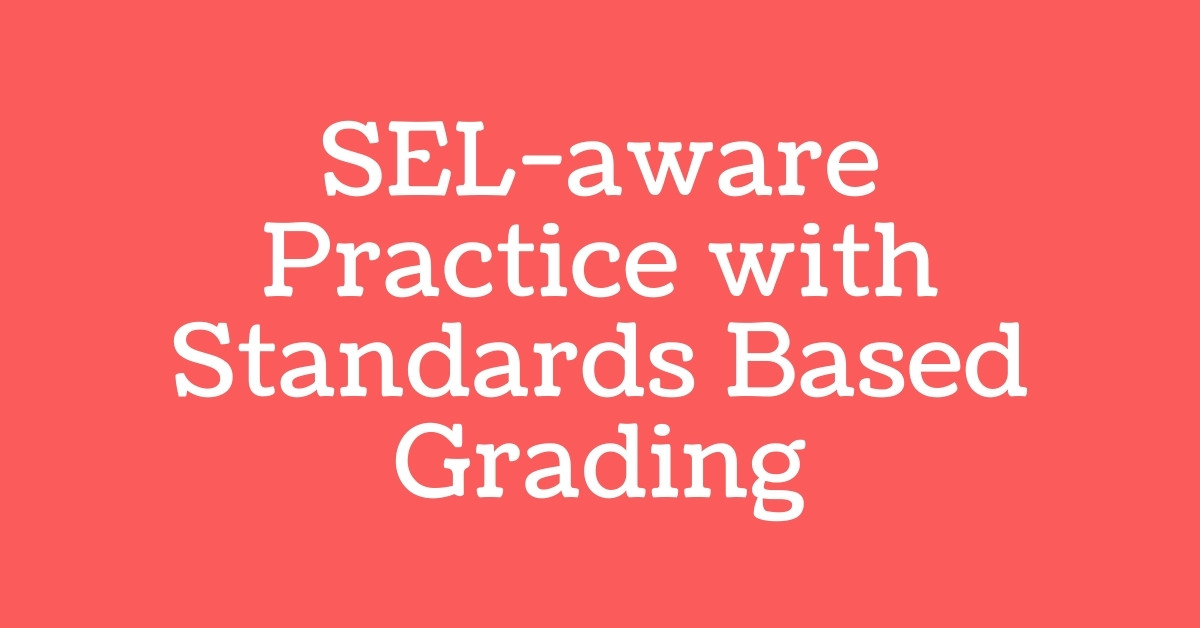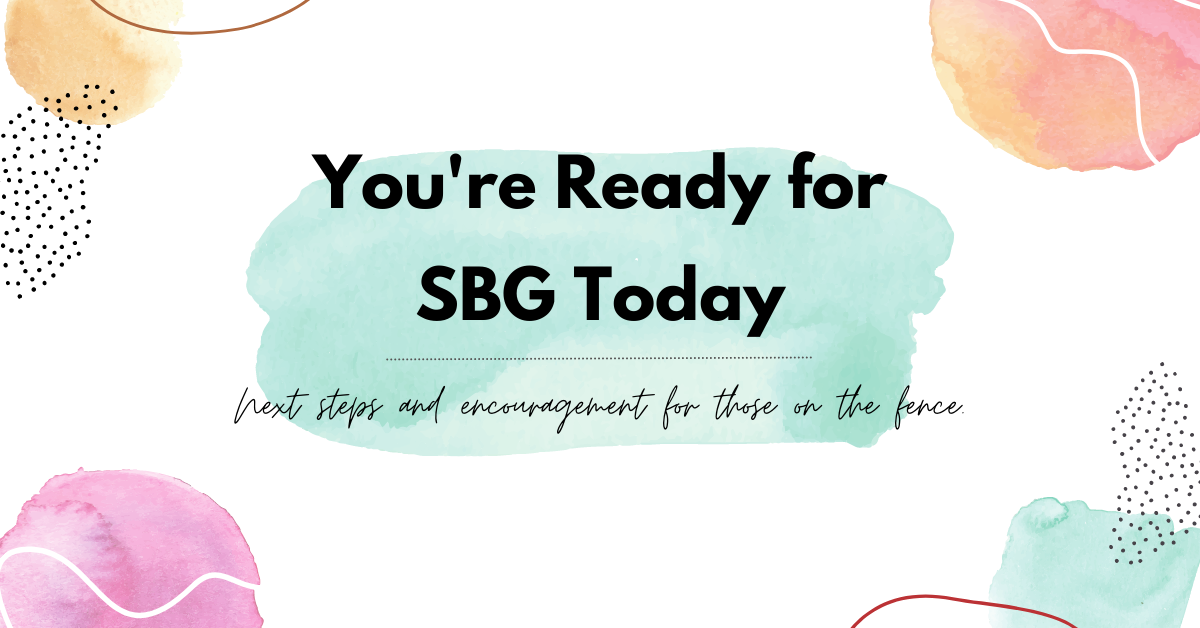53 Search results
Using Seesaw to Support the Four Language Domains: Reading Edition
The language domains, listening, speaking, reading, and writing, are the 4 ways that people can interact with language. Two of these skills, speaking and writing, are described as productive skills as we create language with each of these. The other two skills, listening and reading, are receptive skills because we use these skills to receive information from an outside source. In this post, we will focus on ways that you can practice the language domain of reading by using Seesaw.
Gaining Standards Insight Through Your CFAs
Assessment strategies are critical components in any classroom. Assessments are tools for learning that are commonly used to drive instruction. However, despite their commonality, creating assessments which both measure evidence of learning (summative) as well as evidence for learning (formative) is one of the more challenging tasks as a teacher. In this post, we’ll look at Common Formative Assessments (CFAs) as a tool for gathering standards-aligned data you can use in your PLC meetings. Why use CFAs at all? In the PLC process, CFAs are the tool used by teams to measure learning on essential standards across classrooms. These regular...
Dear Instructional Coaches: Absent Student Struggles
Dear struggling teacher, below you will find our 4 big suggestions when approaching this issue with best technology and SIOP practices, Smekens strategies, and utilizing our ELA curriculum resources. Tip #1: Use accessibility features on the iPad, including those within Seesaw and Canvas. First and foremost, ensure your content is accessible to your students. Have you taught your students the basic accessibility features within the iPad? Be sure to take time to teach these features and then remind students to use them! This will allow your students to be more independent while working through work that the rest of the class has...
Dear Instructional Coaches: Classroom Management Struggles
Dear frustrated teacher, below you will find our 3 big suggestions when approaching this issue with de-escalation, Trauma-Informed Care, and SIOP in mind. Tip #1: Don’t take student behavior personally. Before you can help students control their outbursts and time on task, you need to ensure your own emotions are regulated. This starts with rational detachment. In a nutshell, rational detachment is the ability to control our own behavior/emotions and not take student hostility personally. Sounding easier than it is, you may need to practice regulating your own emotions and reactions to student behavior. Take a step back and take...
Connect with Students and Amplify Learning with Videos
Finding small and easy ways to connect with our students doesn’t just help engage them in content, it also creates small opportunities in building relationship. Making videos can become an easy tool that you keep in your Batman Utility Belt. Check out some new ideas and strategies below on how to use videos in your classroom. Building background / academic language Instead of starting a unit with a video you found on youtube, make your own! Talk about how it connects to your prior unit so it activates prior knowledge or sparks engagement with a fun video of you going...
SBG in the Elementary Classroom
Before we begin, it is important that we all have a shared understanding of the purpose of grades. For standard based grading, we need to agree that the purpose of grades is to represent what students know and are able to do. If this is something you can agree with, you are ready to get started with standard based grading. So what do we need to do to get started? We’ve been working on essential standards in PLCs for almost two years. It’s time to put those essential standards to work by linking them directly to what students are doing...
Planning for Success with SIOP Components
In my classroom, I want all students to learn. Don’t we all? But I also want my nights and weekends to myself and not to be spent lesson planning. So how does one find the time to plan for all SIOP components within every lesson you teach and still work within contract hours? Well, the truth is… you don’t. At least not yet. If you are just getting started on the journey to ensuring your lessons are accessible to all, let me be the first to welcome you to our quest. Below I broke down the SIOP components into two...
SEL-aware Practice with Standards Based Grading
Whether we want to admit it or not, grading is a powerful influencer on emotional wellness. The letter or number on top of an assignment communicates more than performance; to many students, the grade on an assignment communicates value. Standards based grading is a system which allows us to proactively change our grading to promote positive academic and emotional mindsets in students.
You’re Ready for SBG Today
Grades should represent what students know and can do. If you agree, then you’re ready to start.
Adding Audio to Google Slides 3 Ways
Why Should I add Audio? We need to continue to make material that is easily accessible to all of our students. Whether you are presenting a lesson, engaging students in a self paced activity, or sharing an agenda it is easy to add audio to google slides. Right now there are three different ways you can add audio to your google slides. Using the Pear Deck Add on Since we have the paid version of pear deck we can add audio to a slide. This audio only works when you are sharing the pear deck with your students. Follow the...
Low Barrier, High Impact Accommodations
All accommodations are focused on one thing: how do we make the content accessible to the student? Several years ago, I was challenged to think about an educational Hippocratic Oath. What would be on my list of imperatives as an educator? “Do no harm” is the famous line everyone knows, but a more correct summary of the famous line written is, “As to diseases, make a habit of two things — to help, or at least to do no harm.” Do good comes before do no harm. In other words, we should be focusing on the good of all students...
April Resource Pack
Each month, the Technology Ambassadors work hard to create resources, materials, and other tools to help you with planning, brainstorming, or getting quick tips. To make them easy to find, we’ll publish the collection here on the blog as well as send an email digest. Don’t forget to check the PD signup page for upcoming workshops. There are new topics added regularly and we’ll continue to send weekly updates about what’s available to participate in. We archive nearly all PD on the Professional Development page. If you can’t make a Meet, head over there to see what’s available for on-demand...
Using Rubrics on Quizzes in Canvas
This post focuses on how to manually add a rubric to a Quiz in Canvas. The difficulty in writing a post like this is giving clear directions of how to do this in Classic Quizzes versus New Quizzes. We’ve tried to do that here, but if you run into issues or need more help, leave a comment and we’ll be happy to clarify and update. Ever wondered about all the different tools with the quizzes option in Canvas? See the different videos below to help you review what those tools and options are as well as other tips and tricks...

